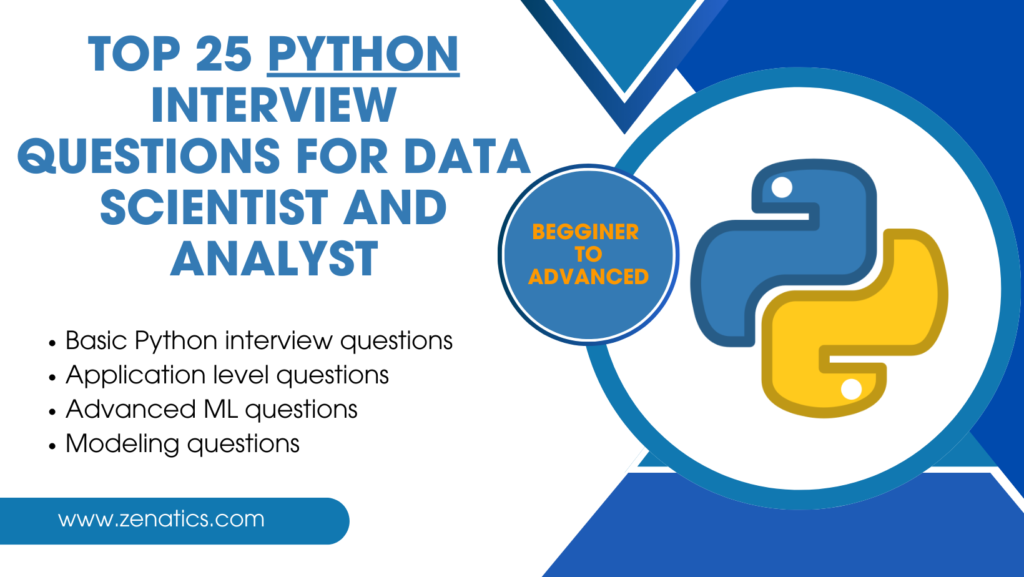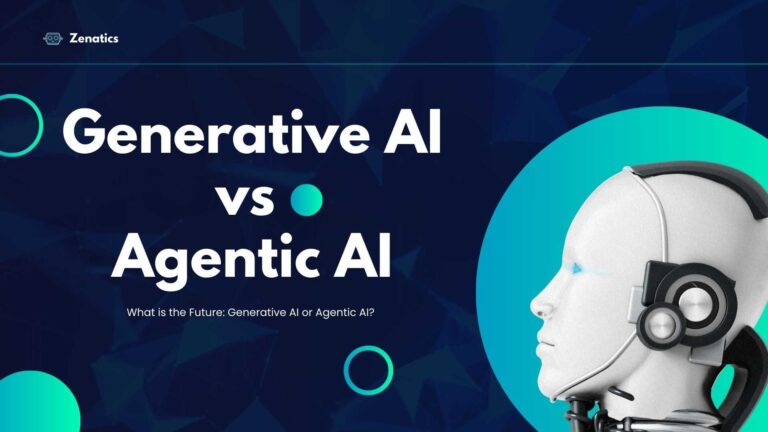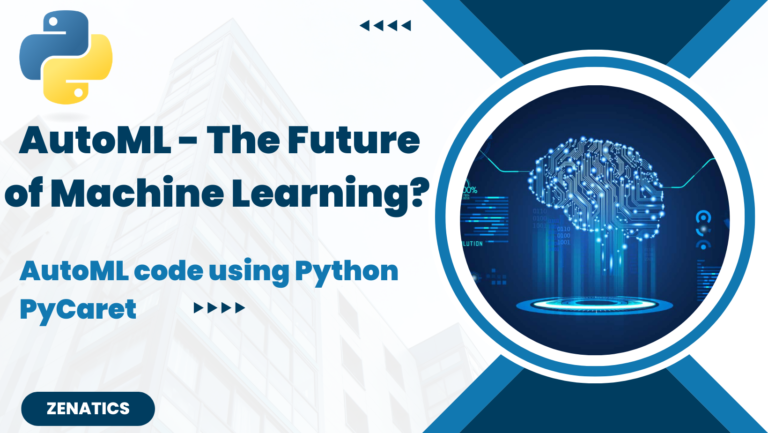Python is the most preferred language for data scientists and analysts due to its versatility, ease of use, community support, and extensive libraries. For a data scientist, analyst, or ML engineer, a question from Python in your interview is a must, and preparing for the interview is very crucial. We have created the most asked and relevant top 25 Python interview questions for data scientists and analysts, with solutions from beginner to advanced.
Python interview questions for data scientists and analysts contain a wide variety of questions. The interviewer will ask questions from the basics, like what are tuples and what are the what are the different data types in Python, to data science or machine learning questions like KNN, regression, and more. Zenatics has created a comprehensive list of the most commonly asked questions in data scientist/analyst interviews, from basics to application-level interview questions.

Basic Python Interview Questions for Data Scientist and Analyst
- What is the difference between
list,tuple,dictionaryandsetin Python?- List –
- List is a non-homogeneous data structure
- List allows duplicate elements
- List is mutable
- List is ordered
- Represented by []. Example: [1, 2, 3, 4, 5]
- Tuple –
- Tuple is also a non-homogeneous data structure
- Tuple allows duplicate elements
- Tuple is immutable
- Tuple is ordered
- Represented by (). Example: (1, 2, 3, 4, 5)
- Dictionary –
- Dictionary is a non-homogeneous data structure that stores key-value pairs
- Dictionary doesn’t allow duplicate keys
- Dictionary is mutable but its Keys are not duplicated.
- Dictionary is ordered
- Represented by {}. Example: {1: “a”, 5: “e”}
- Set –
- Set data structure is also a non-homogeneous data structure
- Set doesn’t allow duplicate elements
- Set is mutable
- Set is unordered
- Example: {1, 2, 3, 4, 5}
- List –
2. How do you merge two Data Frames in pandas?
merged_df = pd.merge(df1, df2, on='common_column')
df1 and df2 ate the data frames and joined on the 'common_column'.3. What is a lambda function in Python?
- Lambda is an anonymous function. Lambda function can take any number of arguments, but can only have one expression.
- Typically used for short, simple operations.
- Example – lambda x, y: x + y
4. How would you find duplicate values in Python?
- We can use duplicated() function to identify and drop_duplicates() function to remove or drop duplicate values.
# Identify duplicate rows
duplicates = data.duplicated()
# Print the duplicate rows
print(data[duplicates])
# Drop duplicate rows
data = data.drop_duplicates()5. What is list comprehension in Python?
- List comprehension is used to define and create a list based on an existing list.
- For example if we want to separate all the letters in the word “ZENATICS,” and make each letter a list item, we can use list comprehension:
#list comprehension in Python?
Z_list = [ letter for letter in 'ZENATICS' ]
print( Z_list)
#Output
['Z','E','N','A','T','I','C','S']6. How do you handle missing values in a dataset using Python?
- Using pandas missing values can be handled very easy.
df.dropna(): To remove rows with missing values.df.fillna(value): To replace missing values with a specified value.df.interpolate(): To fill missing values using interpolation
Read – The Future of Work in India: Trends, Challenges, and Opportunities
Application level Python Interview Questions for Data Scientist and Analyst
In all the interview questions for data scientists, along with basic Python interview questions, they also ask about application and advanced Python interview questions for both data analysts and data scientists.
- How do you handle large datasets in Python?
- Large datasets can be handled by using libraries like Dask or PySpark, which support parallel processing and can handle data that is too big to fit in memory.
- Large file management is further aided by chunking data using pandas’ read_csv() function with the chunksize argument. You can continue using pandas and take advantage of chunking by doing your computations in smaller batches.
- List few methods of NumPy array which you used?
- np.means(), np.cumsum(),np.sum()
3. How do you perform simple linear regression in Python, and which are the most common libraries you have used?
- Linear regression can be performed using sklearn.
#Sample Code
from sklearn.linear_model import LinearRegression
model = LinearRegression()
model.fit(X_train, y_train)4. In the model you are building, How do you handle category data?
- Categorical data can be handled in python by encoding it using below methods:
- Label Encoding – Label encoding is a straightforward and easy method that gives every category a unique integer. For longitudinal data where the order of the categories is significant, this approach works well.
- Ordinal Encoding – Ordinal encoding allocates a distinct integer to each category. It guarantees the preservation of the category order.
- One-Hot Encoding – With one-hot encoding, binary vectors are used to represent each category in a binary matrix created from categorical data. This approach works well with nominal data.
5. What is the ARIMA method in Python?
- AutoRegressive Integrated Moving Average (ARIMA) is a time series forecasting model. It handles non-stationary data by combining differencing (I) with autoregressive (AR) and moving average (MA) components. By analysing and forecasting time-dependent patterns in data, ARIMA models are used via libraries such as statsmodels to support business forecasting.
- A time series forecasting model called AutoRegressive Integrated Moving Average (ARIMA) models temporal structures in the time series data by incorporating autocorrelation measures, which in turn predicts future values.
- ARIMA(p, d, q) is the definition of the ARIMA model, where p, d, and q stand for the number of lag (or previous) observations to take into account for autoregression, the number of times the raw observations are differenced, and the moving average window size, respectively.
6. How do you handle exceptions in Python?
try:
# code that might raise an exception
except:
# code that runs if an exception occurs7. What is matplotlib and how have you used matplotlib?
- Matplotlib is a flexible and strong Python package for producing excellent plots and visuals.
- Key features – Versatility, Customization, Extensible, Interactive Plots, Integration with NumPy
#Import libraries
import matplotlib.pyplot as plt
#Plot
plt.plot(x, y)
plt.xlabel('X-axis label')
plt.ylabel('Y-axis label')
plt.title('Plot Title')
plt.show()8. What are the differences between supervised and unsupervised learning?
- Supervised Learning –
- Uses known and labeled data as input
- Uses feedback mechanism
- Examples – Decision trees, logistic regression
- Unsupervised learning –
- Uses unlabeled data as input
- No feedback mechanism
- Example – k-means clustering, hierarchical clustering
9. Explain the steps in making a decision tree in Python?
- Use the complete set of data as input.
- Compute the predictor attributes and the target variable’s entropy.
- Compute the information you have gained about all attributes (we have information about how to separate different objects from one another).
- Select the root node based on the attribute that has the highest information gain.
- Until each branch’s decision node is decided, carry out the same process on each branch.
10. What is Overfitting and How can you avoid overfitting your model?
- A modelling error known as overfitting happens when a model is overly closely aligned to a small number of data points, making it relevant only to that set of data points and not to any others.
- When an algorithm fits too closely to its training data, a phenomenon known as overfitting can occur in machine learning, which leaves a model incapable of accurately predicting or drawing conclusions from any other data.
- Methods to avoid overfitting –
- Keep the model simple, take fewer variables and features into account and remove noise in the training data
- Cross-validation techniques, example – k folds cross-validation
- Use regularization techniques, such as LASSO
11. What is k-means and How can you select k for k-means?
- K-means is a popular unsupervised machine learning algorithm used for clustering data into distinct groups or clusters.
- Each cluster has k initial centroids, which are then recalculated based on the mean of the data points in each cluster. This process is repeated until all data points have been assigned to the closest centroid.
- Until the centroids stop changing noticeably, a sign that the algorithm has converged, this process is repeated.
- We can use the elbow method to select k for k-means clustering.
12. What is the significance of p-value?
- P-value is a statistical measure that helps determine the significance of your results in hypothesis testing.
- P-value helps you decide whether to reject the null hypothesis
- Common significance level used is 0.05. If the p-value is less than 0.05, the results are considered statistically significant


